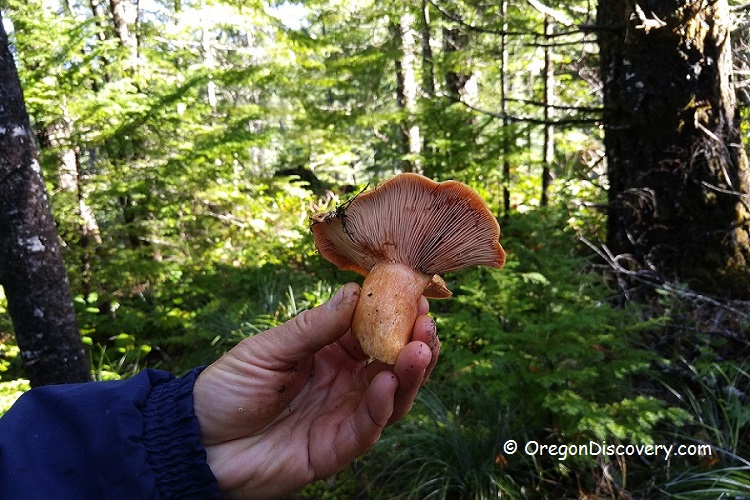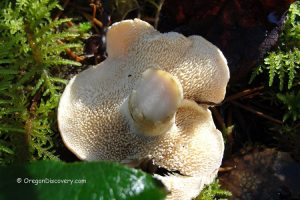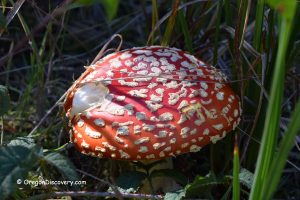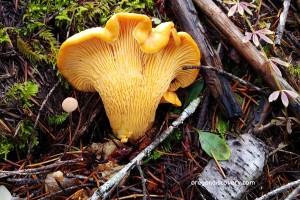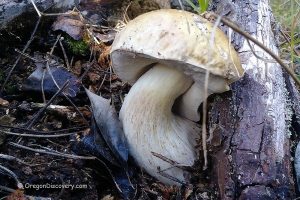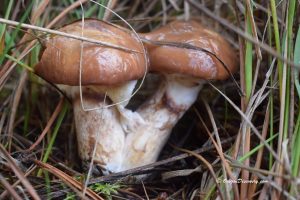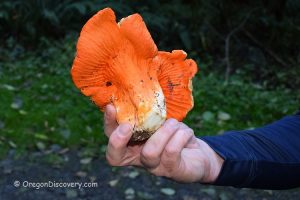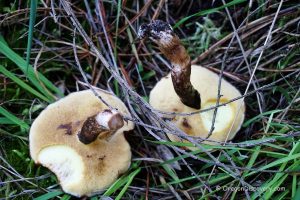Delicious Milk Cap belongs to mushrooms of the Lactarius, Lactifluus, and Multifurca genera. Some of the Lactarius is edible if cooked thoroughly and a few are mildly poisonous. The mushroom's common name is a reference to the milk-like fluid (latex) that is exuded when the fresh fungus is broken or cut.
One of the popular Lactarius species is Saffron Milk Cap or Delicious Milk Cap (Lactarius Deliciosus). This mushroom has been eaten for many hundreds of years and is very popular in China, Japan, as well as in Western and Eastern Europe.
Delicious Milk Cap - Identification and Habitat
The cap is wide and smooth with concentric rings of brown and orange becoming vase-shaped with a depressed center as it matures. When young, the cap stains red and then stains green with age.
Gills and flesh display exude orange milk-like latex.
The species is brittle, breaking into pieces when squeezed.
Delicious Milk Cap is associated with conifer trees such as pines and cedars and fruiting from late summer to fall.
Caution. It may be confused with poisonous Red-Hot Milky Cap (brick red color) or Wooly Lactarius (white to pale cap with the darker center). Avoid species staining purple or yellow when bruise, some of them are poisonous.
Cap: Wide, depressed in the center, orange, zoned with darker orange, 2-6 inches (5-15 cm) wide, staining green when mature.
Cap's Underside: Pale orange regular gills, exuding white to yellow milk when cut, staining green with age.
Spores & Print: Round, creamy.
Stem: Orange, bruises green as it ages, short, stout, 2-4 inches (5-10 cm) long.
Flesh: Cream-yellowish or orangish, staining greenish.
Habitat: Open grassy areas in coniferous and deciduous forests.
Season: August to November.
Look-alikes: Bleeding Milk Cap (Lactarius rubrilacteus), Red-Hot Milky Cap (Lactarius rufus)
Features: Green-staining is an indicator of Lactarius Deliciosus species.
Method of Cooking
Can be salted or pickled. Before preserving, milky caps need to be thoroughly cooked – boiled or blanched into the salted water. Changing the water twice decreases the possible toxic properties and improves flavor.
Use young and firm mushrooms. Make sure to check there are no maggots. Carefully clean mushrooms and sliced them.
Delicious Milk Cap Pickling (1 lb /450 g)
Marinade: 1/2 pint (300 g) of water, 1 teaspoon of pickling spice, 1 teaspoon of sea salt, 3 cloves, 2 garlic cloves, 1 bay leaf.
- Boil the mushrooms for 10-15 minutes in a large amount of water; discard the water; rinse in the cold running water
- Continue boiling for 10-15 minutes and then carefully rinse and drain them
- Bring marinade to boil
- Add the mushrooms into marinade and simmer all together for about 8 minutes
- At the end of simmering, add 1 tablespoon of 5% vinegar
- Take the mushrooms from the pot and place them into a sterilized jar
- Add marinade to cover mushrooms
- Cool it and store in the refrigerator for up to 2-3 weeks
- Drain before serving and serve with olive oil.
You May Also Enjoy
Disclaimer
This is not an official guide to wild mushroom foraging. Please, do your own research, be sure to practice with a mushroom expert before you pick up and consume any wild mushrooms. Before you start wild mushroom harvesting, learn to accurately identify poisonous mushrooms as well. All wild edible mushrooms must be thoroughly cooked. Make sure that you are not allergic to a new mushroom by trying a small amount before eating more.

